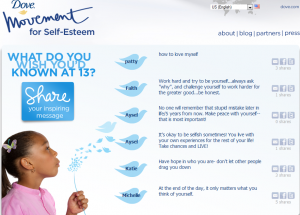 You’re probably already familiar with the right and left brains… but what about the female brain? How does it differ from a male brain, and what does this mean for content marketers?
You’re probably already familiar with the right and left brains… but what about the female brain? How does it differ from a male brain, and what does this mean for content marketers?
First, let’s review the right and left brain functions…
The left hemisphere is the center of linear thinking such as language, logic, and mathematics.
The right hemisphere is the center of abstract conceptual thoughts such as art, music, creativity and inspiration.
Corpus Collosum: The two hemispheres have neurons that connect the two sides, so that both are involved in much of what we do.
In females, this connection is much stronger. There are many more neurons connecting the two hemispheres, which accounts for her greater ability to operate out of both sides of the brain. Men tend to use predominantly one side or the other, which account for their ability to focus and compartmentalize.
This is one of the primary differences in male and female brains, there are others.
Female brains have more developed language centers in the brain. A man says approximately 2,000 words a day, a woman 7,000. That’s 3 1/2 times as much talking…
A woman has more active mirror neurons, and a greater capacity to experience empathy.
Which gender do you think will respond better to a lot of content? To social opportunities? To social media participation? Hmmmm…
 The Dove.com site is one of the better sites that understand content marketing to females. Their site is as much about women as it is about soap.
The Dove.com site is one of the better sites that understand content marketing to females. Their site is as much about women as it is about soap.
I don’t know many females who aren’t interested in self-esteem issues, who haven’t had their own issues with body image, do you?
This site appeals to us because of it’s attention to:
- Communications
- Core values
- Personal development (in this case self-esteem and daughters)
- Ways to help others
- Ways to Participate
Here’s what women seek online:
- Connectedness
- Community
- Conversations
- Convenience
- Personal development for themselves and their families
What does this have to do with selling soap? Everything. It’s content marketing to create brand loyalty because of audience participation. Women pay attention to brands that make every effort to understand their needs and offer help to their multiple roles.
Women are estimated to be responsible for:
- 84% of purchases, including
- 80% of health care decisions
- 91% of general household purchases
- 94% of furnishing purchases
- 92% of vacation spending
- 62% of car purchase
In US, 30% of women earn more than their husbands. Women control over 50% of private wealth in US. 91% of women believe that advertisers don’t understand them. 58% are seriously annoyed by portrayals of their gender (Barletta 2005).
Just as for sites that target older people and men, I think we can do a better job of appealing to the female brain. What do you think?














Recent Comments